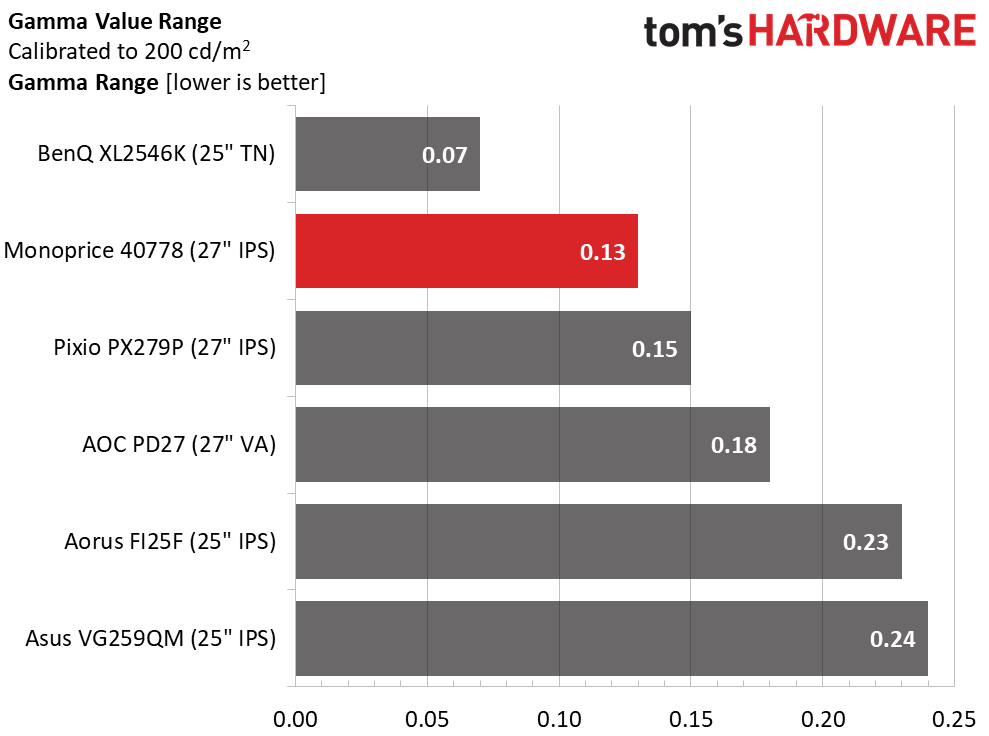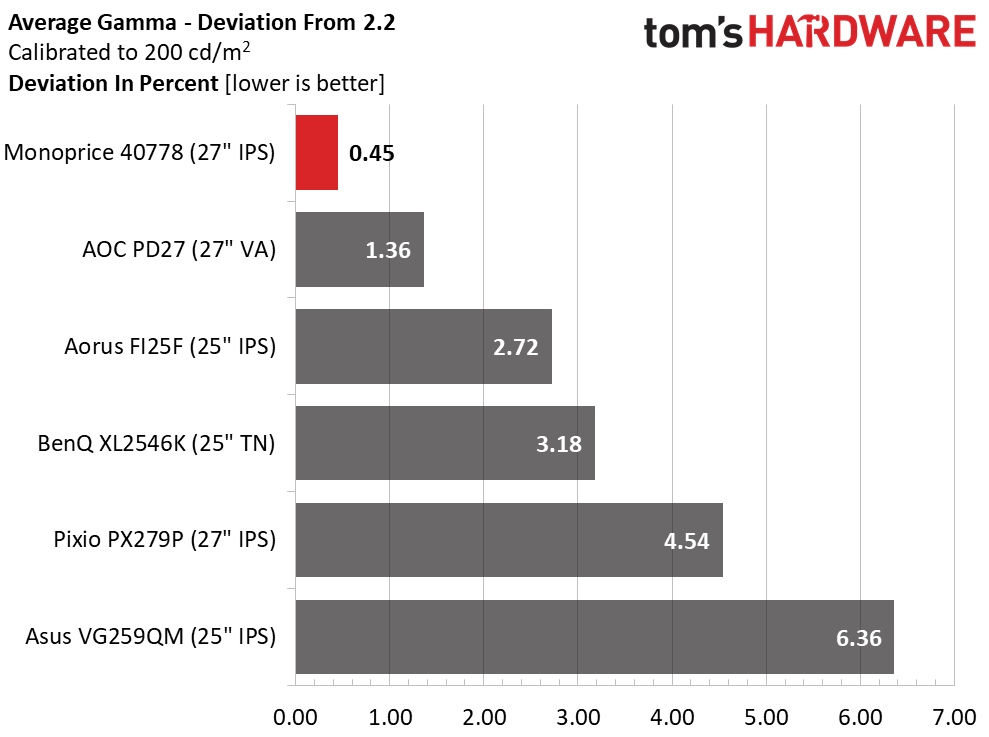Why you can trust Tom's Hardware
The Dark Matter 27 ships in its User picture mode which makes all calibration controls available including gamma and color temp. The gamut is limited to sRGB but it covers that space fully.
Grayscale and Gamma Tracking
Our grayscale and gamma tests use Calman calibration software from Portrait Displays. We describe those our grayscale and gamma tests in detail here.


The Dark Matter 27’s grayscale runs a little blue but it’s not too far over the visible threshold. Errors appear at 40% and higher levels. Depending on content, this issue will be hard to spot. Gamma also tracks well at just slightly over the 2.2 reference. This also will be hard to spot in actual content.
Calibration is very successful thanks to precise RGB sliders that start at the center of their adjustment ranges. We got all errors below 2dE and most were under 1dE. That’s excellent performance and it makes an obvious improvement in image quality. Gamma is nearly unchanged at an excellent 2.21 average value.
Comparisons




Here’s another difference between the Dark Matter 27 and the Pixio PX279 Prime - default grayscale tracking. The Monoprice barely needs calibration while the Pixio definitely does. At this point, we have concluded that the two monitors may share some hardware but have clearly been set up differently. The Monoprice has a noticeable edge in brightness and color accuracy. Its 3.48dE default grayscale error is quite good in this comparison.
Though calibration took us to just 0.74dE, it’s only good enough for fifth place. It’s a competitive field to be sure. The Pixio calibrates well too but lags a bit behind the others.
Gamma tracks very straight with almost no variation between values and just a slight deviation from the 2.2 spec. It doesn’t get much better than that.
Get Tom's Hardware's best news and in-depth reviews, straight to your inbox.
Color Gamut Accuracy
Our color gamut and volume testing use Portrait Displays’ Calman software. For details on our color gamut testing and volume calculations, click here.


The Dark Matter 27 is an sRGB monitor but it has been tweaked a bit to look more saturated in the mid-tones. The default errors aren’t too bad with some hue issues in cyan and magenta. These can be fixed with grayscale calibration. All primaries, and especially blue, are over-saturated in the mid tones which in practice is a good thing for HDR content. We found the Monoprice to be natural and vibrant in its presentation.
Comparisons


Because of the Dark Matter 27’s over-saturated blue primary, it doesn’t post a great color error score. But it is only a bit off the standard set by the other monitors. In this test, its performance is similar to the Pixio. 3.57dE is a respectable error level, especially at this low price point.
There is no suggestion of covering the DCI-P3 gamut, but the Dark Matter 27 manages to exceed full coverage of sRGB by 8.08%. This won’t impact accuracy too much, but it will give a little extra punch to all content. If you’re planning any color critical work, a software profile can take care of the extra volume. It’s generally better to have too much than too little.

Christian Eberle is a Contributing Editor for Tom's Hardware US. He's a veteran reviewer of A/V equipment, specializing in monitors. Christian began his obsession with tech when he built his first PC in 1991, a 286 running DOS 3.0 at a blazing 12MHz. In 2006, he undertook training from the Imaging Science Foundation in video calibration and testing and thus started a passion for precise imaging that persists to this day. He is also a professional musician with a degree from the New England Conservatory as a classical bassoonist which he used to good effect as a performer with the West Point Army Band from 1987 to 2013. He enjoys watching movies and listening to high-end audio in his custom-built home theater and can be seen riding trails near his home on a race-ready ICE VTX recumbent trike. Christian enjoys the endless summer in Florida where he lives with his wife and Chihuahua and plays with orchestras around the state.